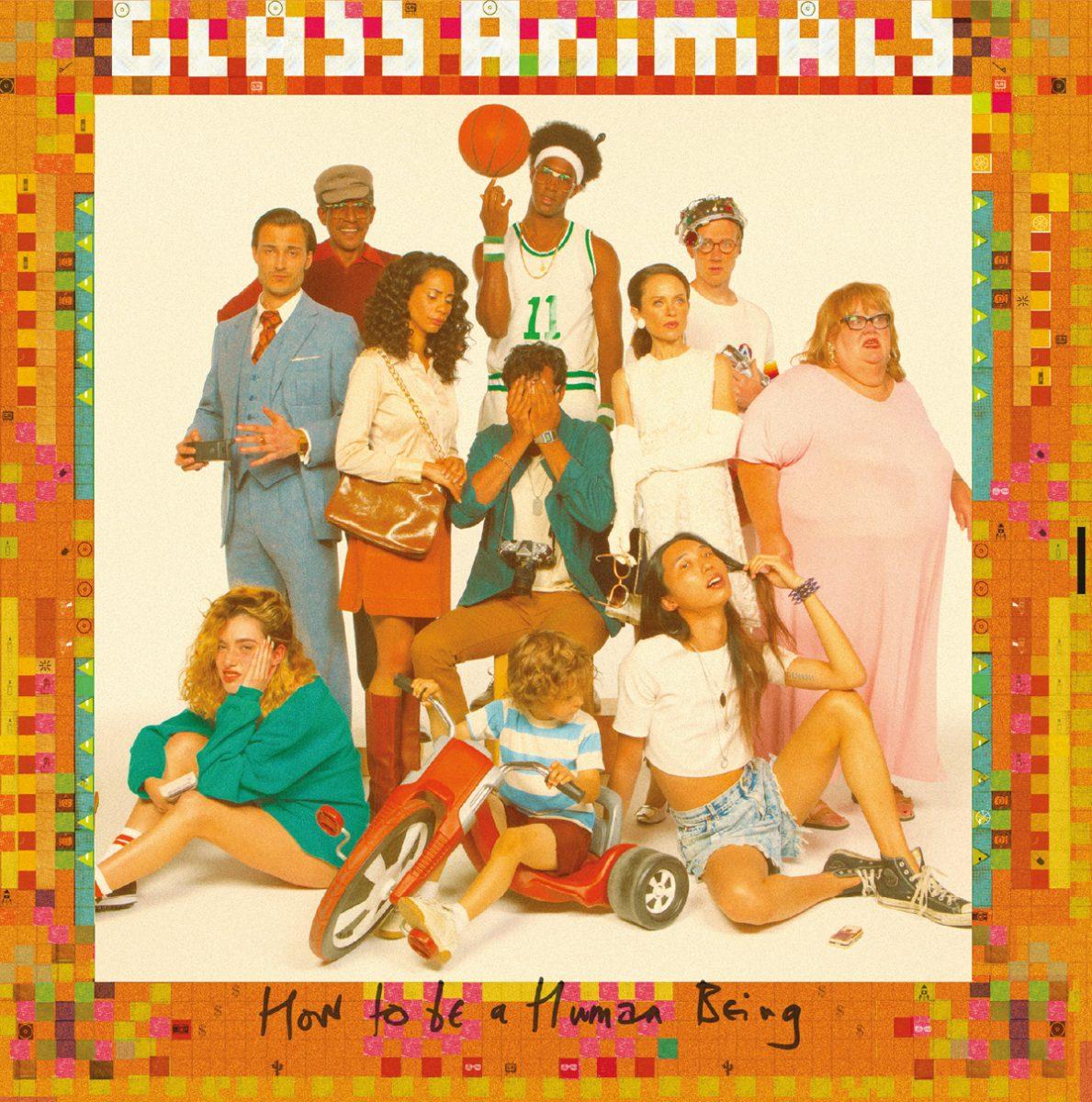When British alternative band Glass Animals released their debut album “Zaba” in 2015, singles such as the lush, sensuous sounding “Gooey,” which currently has over 64 million streams on Spotify, seemed to affirm the group’s signature sound and build up their reputation as slinky, witty maestros of the indie music scene.
While touring with “Zaba” last year, the band, composed of frontman Dave Bayley and fellow band members Drew MacFarlane, Edmund Irwin-Singer and Joe Seaward, found themselves meeting and talking to people they would never meet again—strangers with fantastic stories to tell. While these interactions no doubt are the norm for any busy touring musicians, Bayley became so fascinated with these strangers he would never meet again that their stories manifested themselves into Glass Animals’ second album, “How To Be A Human Being.”
While “Zaba” is a seductive, smoky affair that falls on the downtempo, chill side of the spectrum, “How To Be A Human Being” goes to show how far Glass Animals has evolved from the niche sound of their debut album. Each song on this sophomore album tells the story of a character, and Bayley takes on the challenge of becoming the character as well.
Hearing the album in its entirety proves that this painstaking concept of bringing a character to life in each song works seamlessly, with Bayley slipping in and out of different characters like a skilled stage actor. The lead single “Life Itself” is a rambunctious, jungle-frenzied sounding narration from a guy down on his luck. It seems to represent one of the peak points of “How To Be A Human Being,” proving that Glass Animals is capable of developing their sound in mature and pioneering ways.
Lyrically, the tracks are well crafted, but the even balance of the band’s production also makes each song a unique listening experience. “Take A Slice” drips like a glob of grape jelly with its whomping synths and lazy drums, amplifying the promiscuous and teasing nature of its narrator. A lackadaisical track like “Season 2 Episode 3” about a lazy, stay-at-home guy whose girlfriend “eats mayonnaise / From a jar when she’s gettin’ blazed” has an enjoyable video game-esque sound. “Mama’s Gun” tingles the spine with beautiful flute solos and murmuring harp-like sounds—a fitting mood for a song about a murderous, mentally unstable character with eery lines like “Little voices buzzin poison / Backward noise from everything” puncturing the quiet. Meanwhile, “Cane Shuga” combines a mix of chanting, monotonous autotune to evoke the artificial confidence that the song’s character embodies while on cocaine.
In other tracks like “Poplar St,” “The Other Side of Paradise” and the heartfelt “Youth,” Glass Animals pay their respects to their alternative indie foundations. However, these tracks are most powerful in the context of the whole album and don’t function well to keep the listener’s interest on their own.
It is easily noticeable when listening to “How To Be A Human Being” that Glass Animals is successfully working to prevent being typecasted in any way. The most obvious indicator of this is the 36 second rap interlude “[Premade Sandwiches],” which pokes fun at the notion of people standing in line and an obligation to categorize things. And of course, the group does not hesitate to include lines such as “Pineapples are in my head / Got nobody ‘cus I’m brain dead” which playfully acknowledges the group’s signature tradition of tossing pineapples at their live shows.
The final track of the album is the heartbreaking, bittersweet tale of troubled drug-user “Agnes” that effectively drives home the titular theme of “How To Be A Human Being.” With lyrics that are simultaneously intimate and provoking meshing with its alternative-rock sound, “Agnes” sounds like the band’s ultimate homage to the emo kid’s anthemic musical tendencies.
The strongest take away from listening to “How To Be A Human Being” is the album’s ability to resonate with people. In this album, Glass Animals has taken an impressively sharp veer away from the “peanut butter vibes” of their debut album. Their artistry feels more human to general listeners, placing less value on the “coolness” factor featured so prominently in their first album. The change is warmly welcomed, and critically, more relatable.
Photo courtesy of Glass Animals






